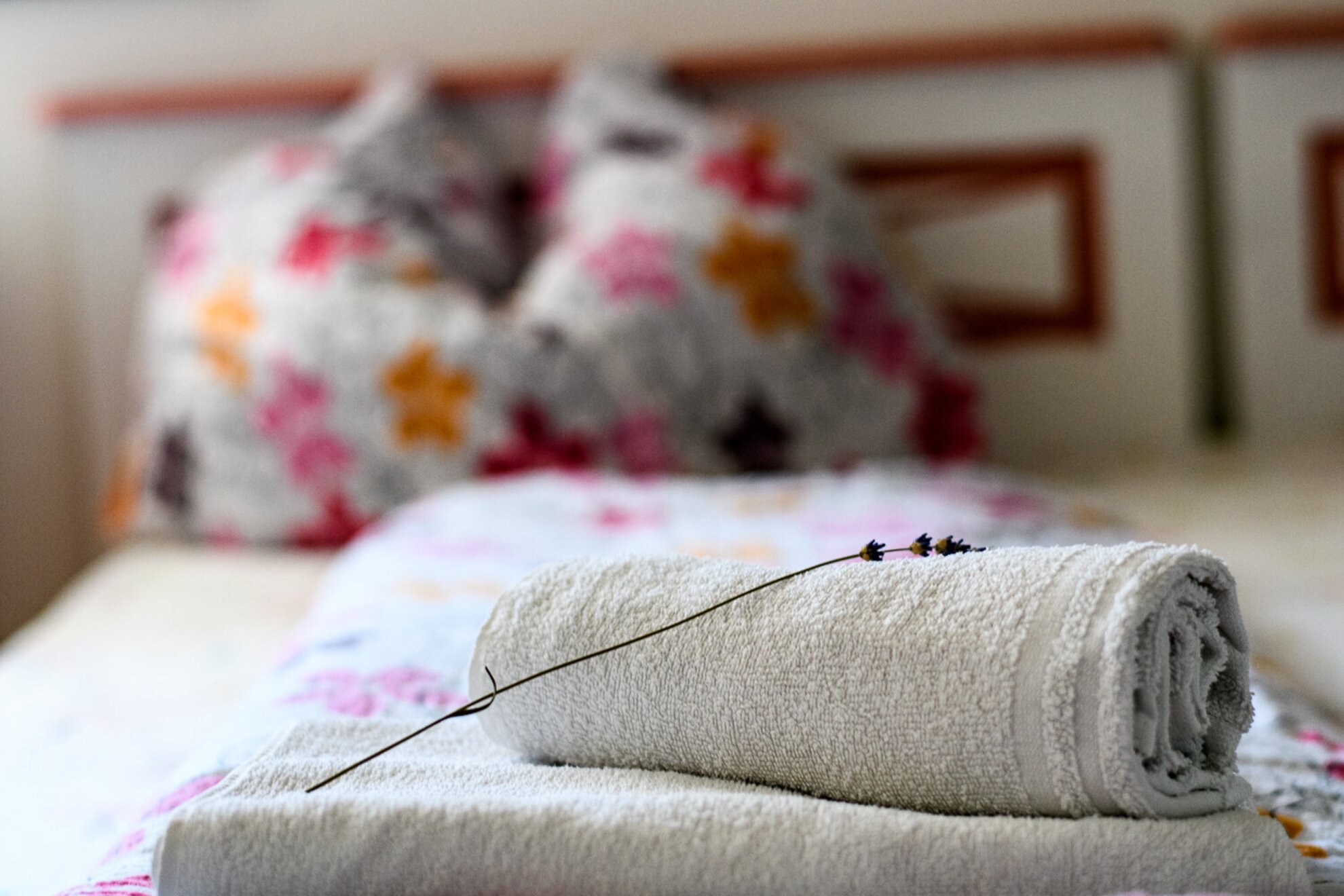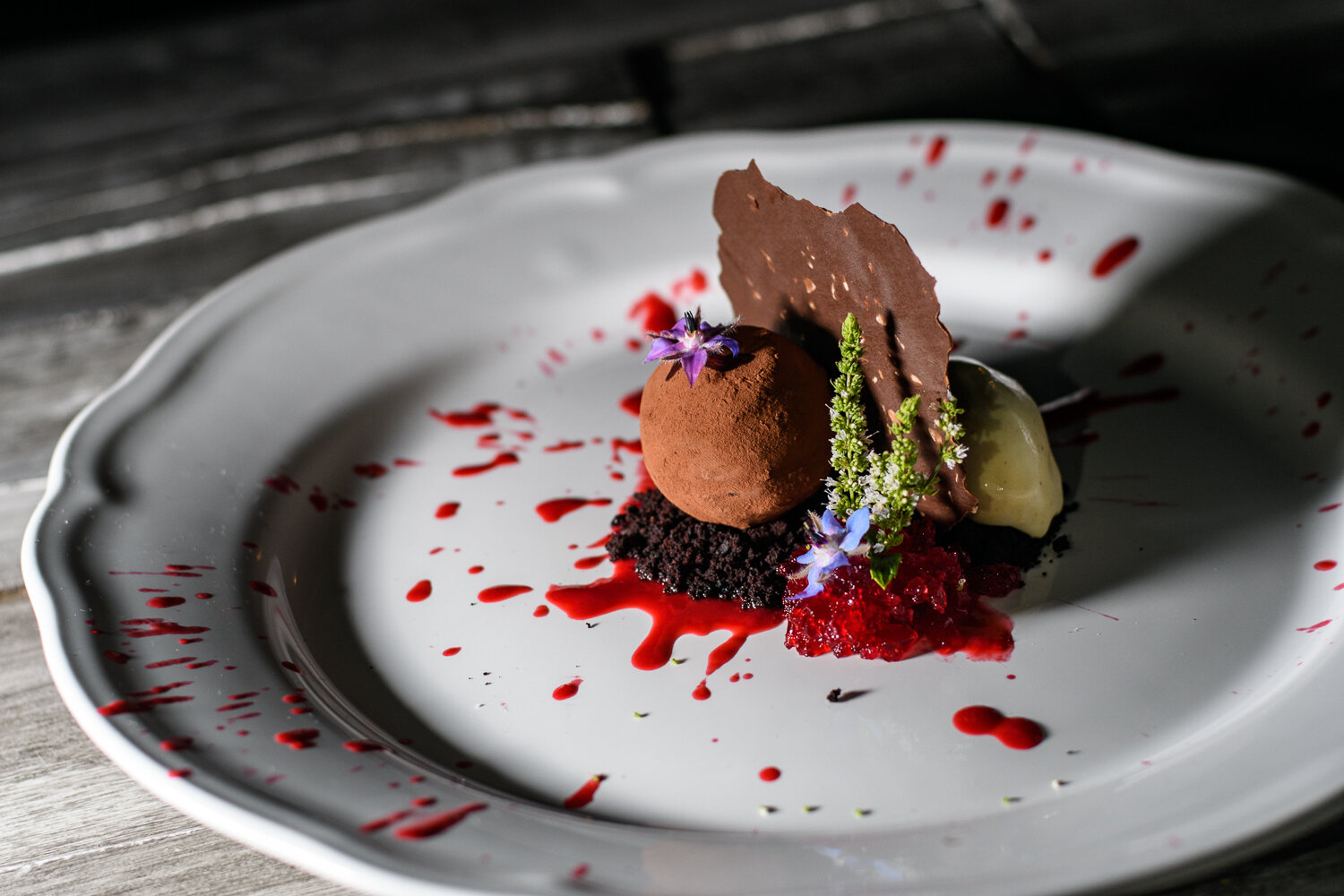There are no elegant waiters, courses with fancy names, or crazy prices, yet we still feel like we’re in a high-profile restaurant. Here you can never see more than ten people, the only server is the tiny, fragile, and always smiling owner, Klára Tüdős, while the meals are prepared by the one and only chef who also happens to be Italian. There’s only one thing the young couple don’t want to see Cselling Udvarház become: a large restaurant where, due to the hustle, they would lose the very things they like about it – the intimacy and the passion.
The story of Cselling Udvarház starts as one about love. Of course, we know other places managed by the great dynamics of couples, but Klára and Moreno is a bit different. The fact that they’re young, attractive, and nice would predestine them for an advertisement at least, but that wouldn’t paint the whole picture. Theirs is a love story in a different sense as well, as they love gastronomy, hospitality, and good life with at least the same amount of passion as they love each other.
We weren’t the only ones captivated by this romantic atmosphere: located in a tiny street of Révfülöp, the most common guests of Cselling Udvarház are couples. The renovated former clergy house is close to Lake Balaton, but it’s quiet and peaceful – here we can hide from the world. There aren’t many guests as there can only be up to twelve people in the house at the same time.
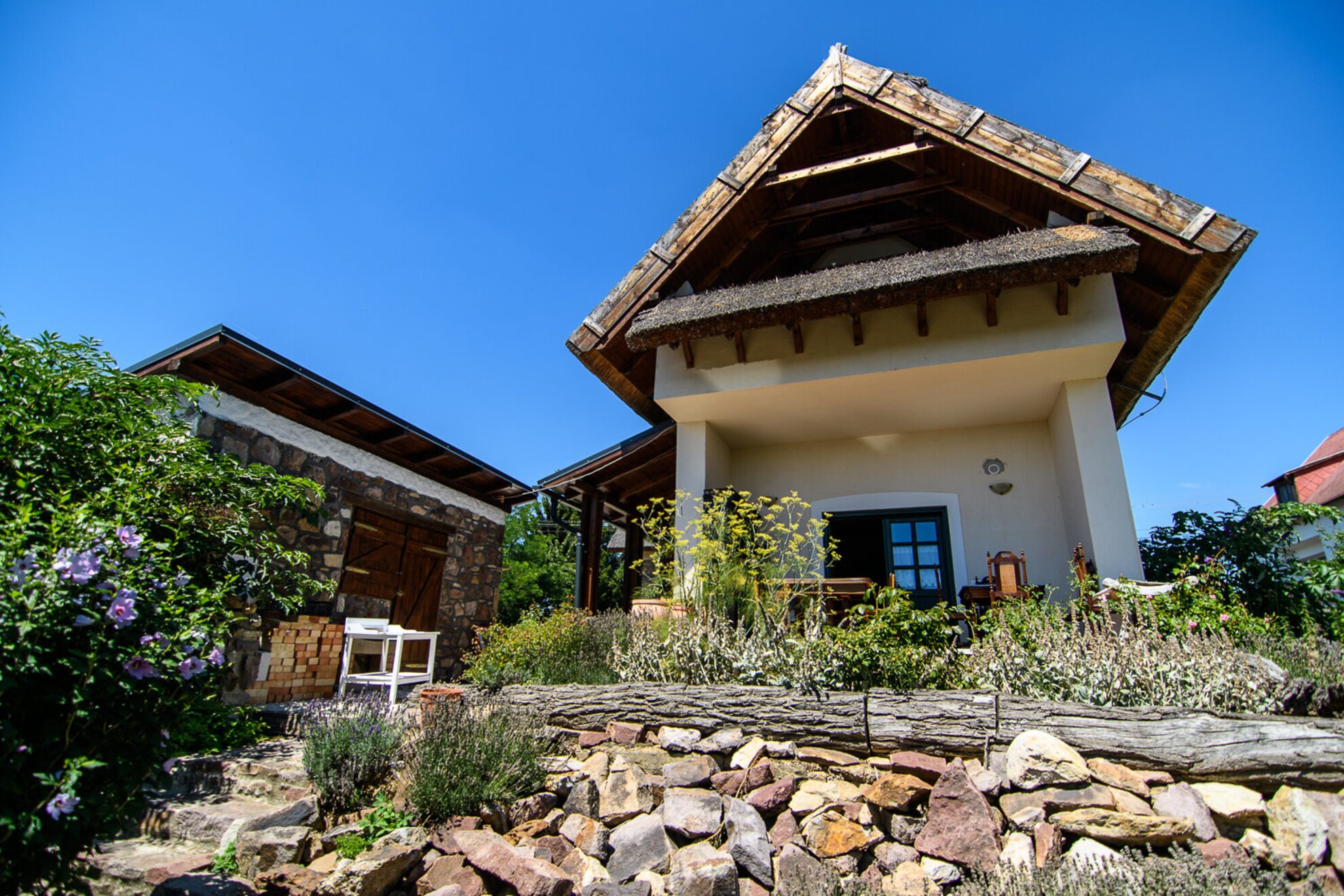
We can see Lake Balaton from the terrace and Fülöp-hegy from the window, so the view is quite good. There’s a large garden behind the house, and Klára plans to grow vegetables there in the future. They have three apartments with various styles (28,000 HUF/night for two): one of them has the atmosphere of an Italian villa, the other evokes romantic rustic vibes, while the third one is nostalgic, vintage, just like the house of an old dame. Families can come here as well, just like hikers, or smaller groups of friends.
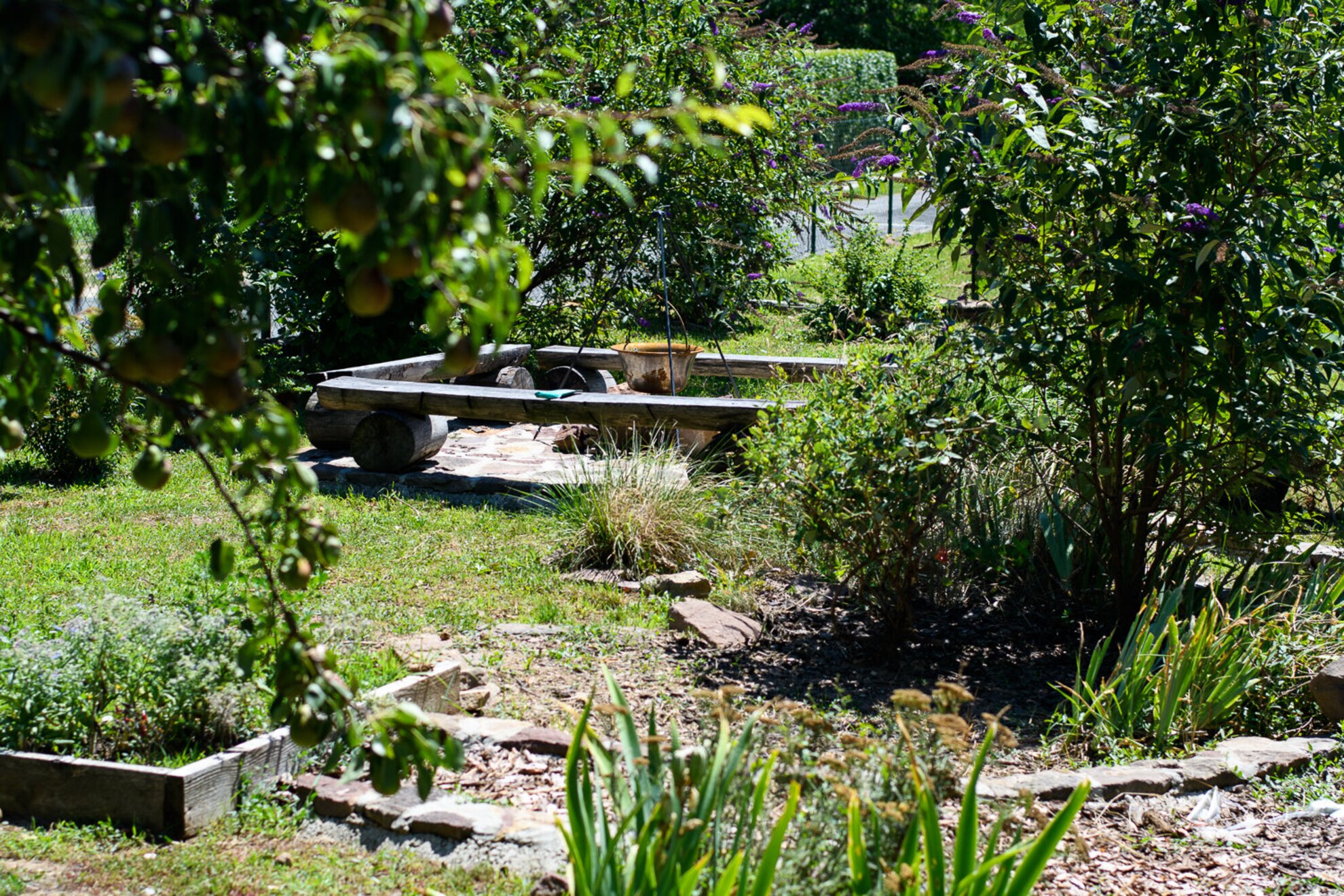
An unorthodox clergy house
The guesthouse was opened by Klára’s parents in 2011, Klára took it over this February, and the first guests arrived in March. Klára’s mother is in love with Lake Balaton, and they were looking for the perfect holiday home. They traveled here every weekend from Békéscsaba to look for houses. They found the house of a winemaker in Révfülöp that they used as a family holiday home for years, but later, although Klára’s parents weren’t in the hospitality industry, they thought about opening a guesthouse because the place was just so beautiful. That was when they purchased the neighboring, almost 100 years old clergy house.
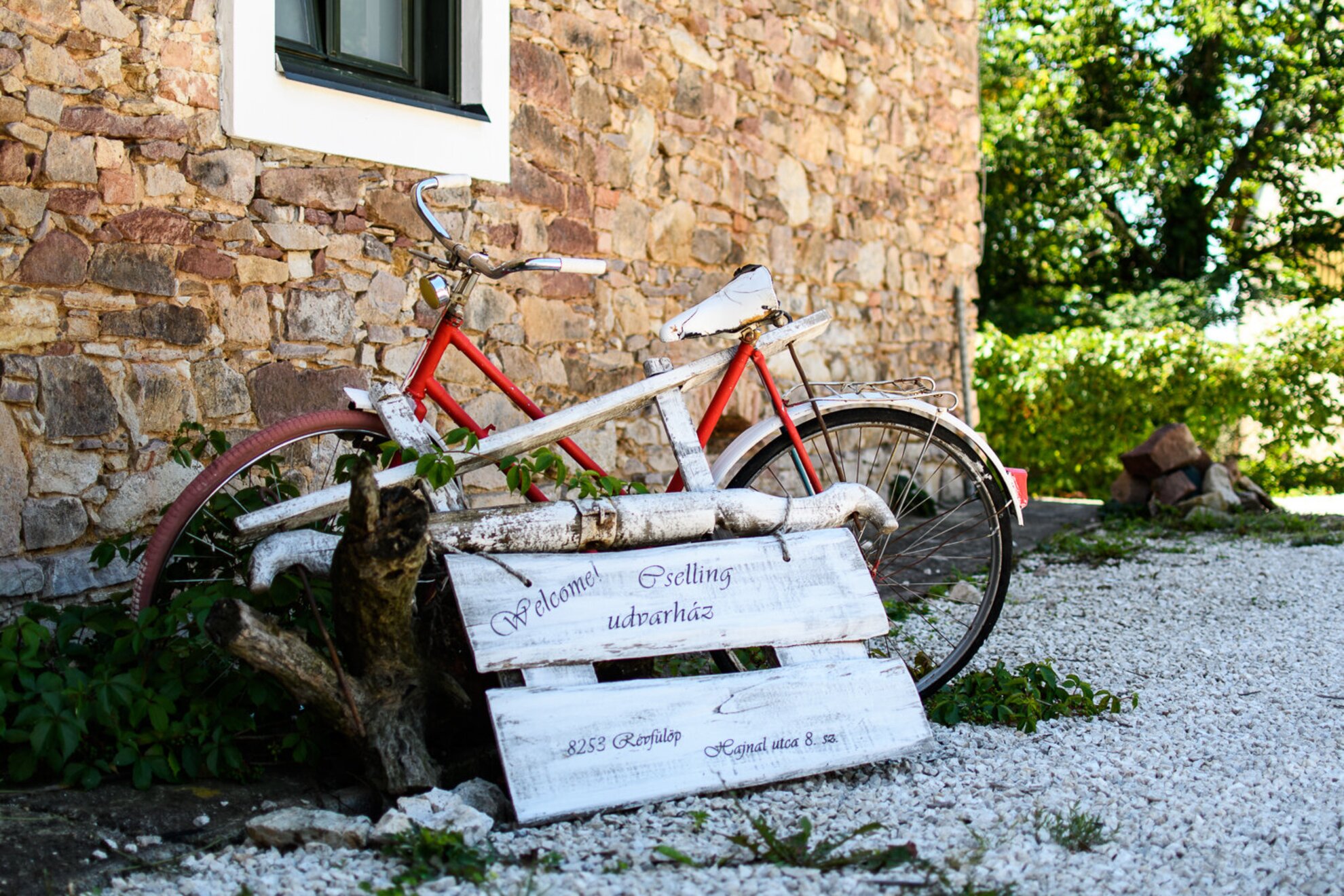
They discovered the beams, the crested bricks with initials on them during the renovation – there’s even one marked ‘KT’, Klára’s monogram, which she proudly points out, and thinks that it’s very meaningful that now it’s built into the house. When the paint was removed, they saw the once typical, now rare red sandstone wall. This is Klára’s favorite element in the house: the union of old and new. The shelves are lined with her mother’s wonderful porcelain collection – we can sip tea from these at breakfast.
Dinner isn’t served in these as Moreno’s chef-eyes are only pleased by white plates – that way he can create the colors and shapes that he wants on them. We can use the traditional soaps and a porcelain basin to wash our hands – the rustic details are refreshing and charming, and fortunately they aren’t too much, which is partly because everything looks spacious, airy, and bright.
The breakfast is managed by Klára, and she fills the table with vegetables, salamis, cheeses, traditional sausages, homemade croissants, cookies, and cakes. The Italians are sweet-toothed and they love a sweet breakfast; Klára also participates in the baking, especially given that she is a trained confectioner. She also leads the household, while Moreno has the leading role in the evenings.
Style exercise for cottage cheese
When we were there we were served with mangalica lardo on toasted bread, then we got butternut squash cream soup with bacon and curd cheese dumplings and fried scamorza. “Moreno just started to get to know cottage cheese,” explains Klára, while Moreno is busy with the next course. “He’s been loving túrós csusza since he arrived to Hungary. He’s Italian and has been working in restaurants since he was 15 so I can barely show him anything new. Cottage cheese did the trick. Although the cold fruit soup is still something unfathomable to him,” she laughs.
The cottage cheese experiments are still going on, and we really don’t mind that. Next up is tortellini filled with cottage cheese and ricotta, served with bell pepper cream and potato chips, and then comes the mangalica fillet meatloaf with mashed potatoes, eggplant cream, red cabbage, and a delicately dancing rice cracker on top of it. Every course is a work of art: the dessert, a praline chocolate mousse belongs to a museum of modern arts. If all these still aren’t enough to consume our full attention, then we can glimpse through the window to see Moreno lean over the plate while composing the meals with great care.
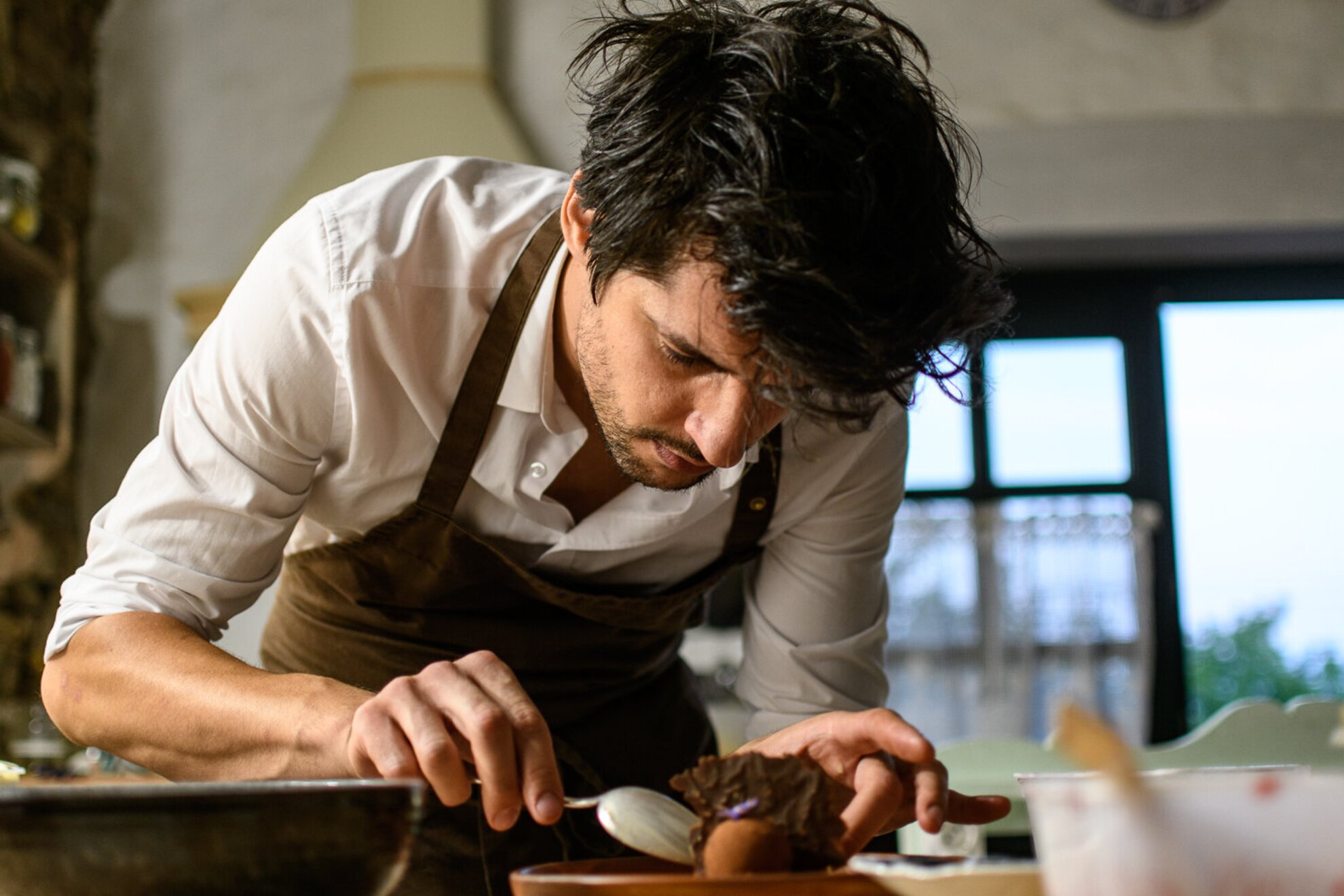
Who cares about Michelin-stars?
Our gluttony makes us scream for a restaurant so that we can experience this many times and so that others could, too – and not just the 8-10 people who stay in the guesthouse and have dinner here. But Moreno just shakes his rumpled head saying “non, non”. He started working in the kitchen as a teenager, he washed the dishes, then cooked in Michelin-starred restaurants in Italy, Taiwan, Brazil, Germany, and, most recently at Costes in Budapest, and he had enough of the hustle.
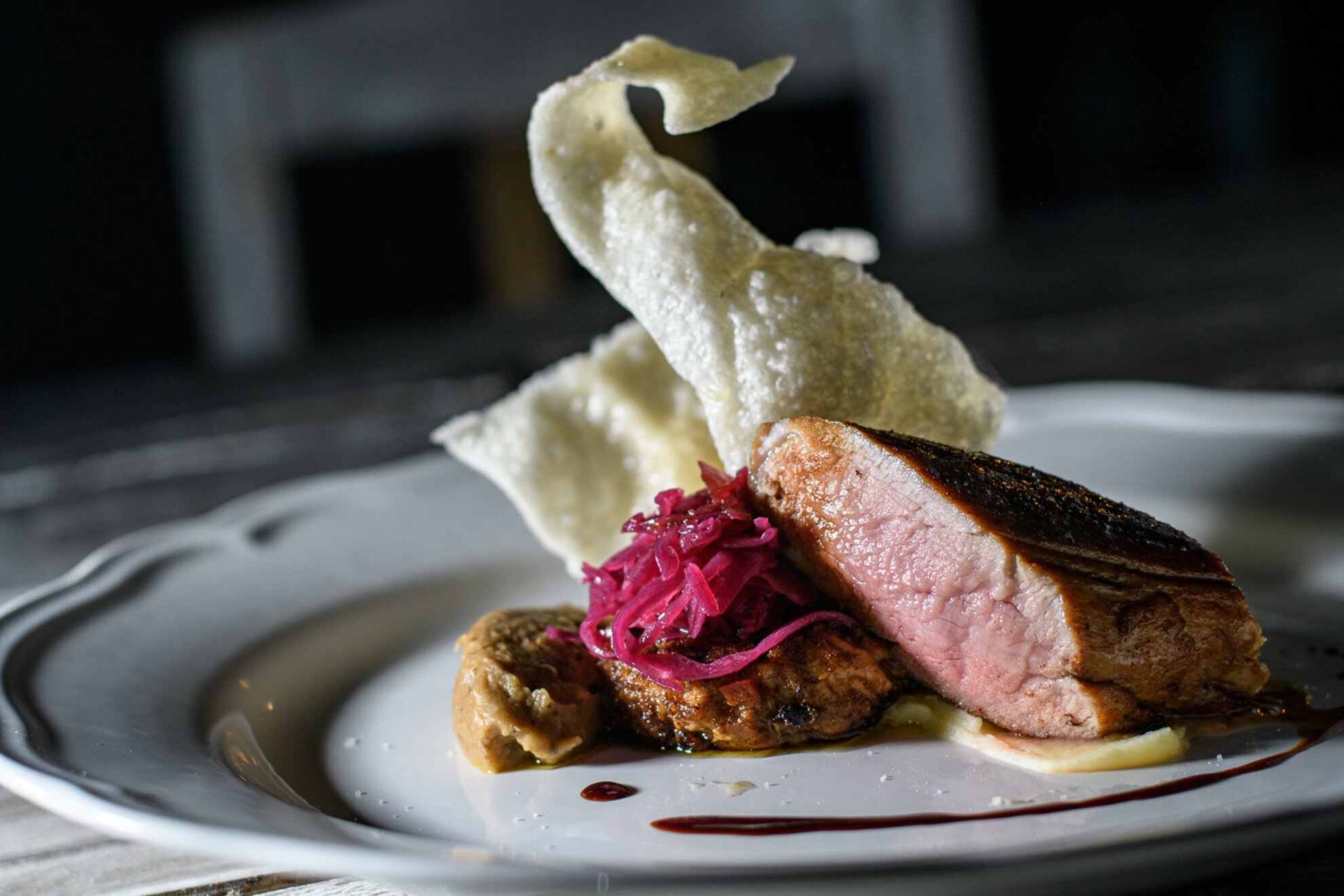
“It’s good the way it is. This was always my dream, a small restaurant, where I can dress like this, not like chefs usually do, and where there’s something different on the menu each day. I don’t want to work at a Michelin-starred place anymore, because there's too much stress. Now I want to prove myself to myself and my loved ones. Life itself is what’s important, and work can’t be my life. I thought it can be, when I was 18-20 years old, but it’s different now, I know that work in itself won’t make me happy,” he says, and let’s us know what does make one happy: a new country, a new life, and, most importantly, a new family – they are expecting their first baby with Klára. “The most important thing is that Klára feels well,” he says, “She makes the best noodles with cottage cheese and the best potato soup” – although we don’t doubt it for even a second that their connection is about more than homemade food. “And my tiramisu is also very nice. Moreno said I make it just like his mother,” adds Klára, who then quickly switches from Hungarian to Italian to translate for Moreno.
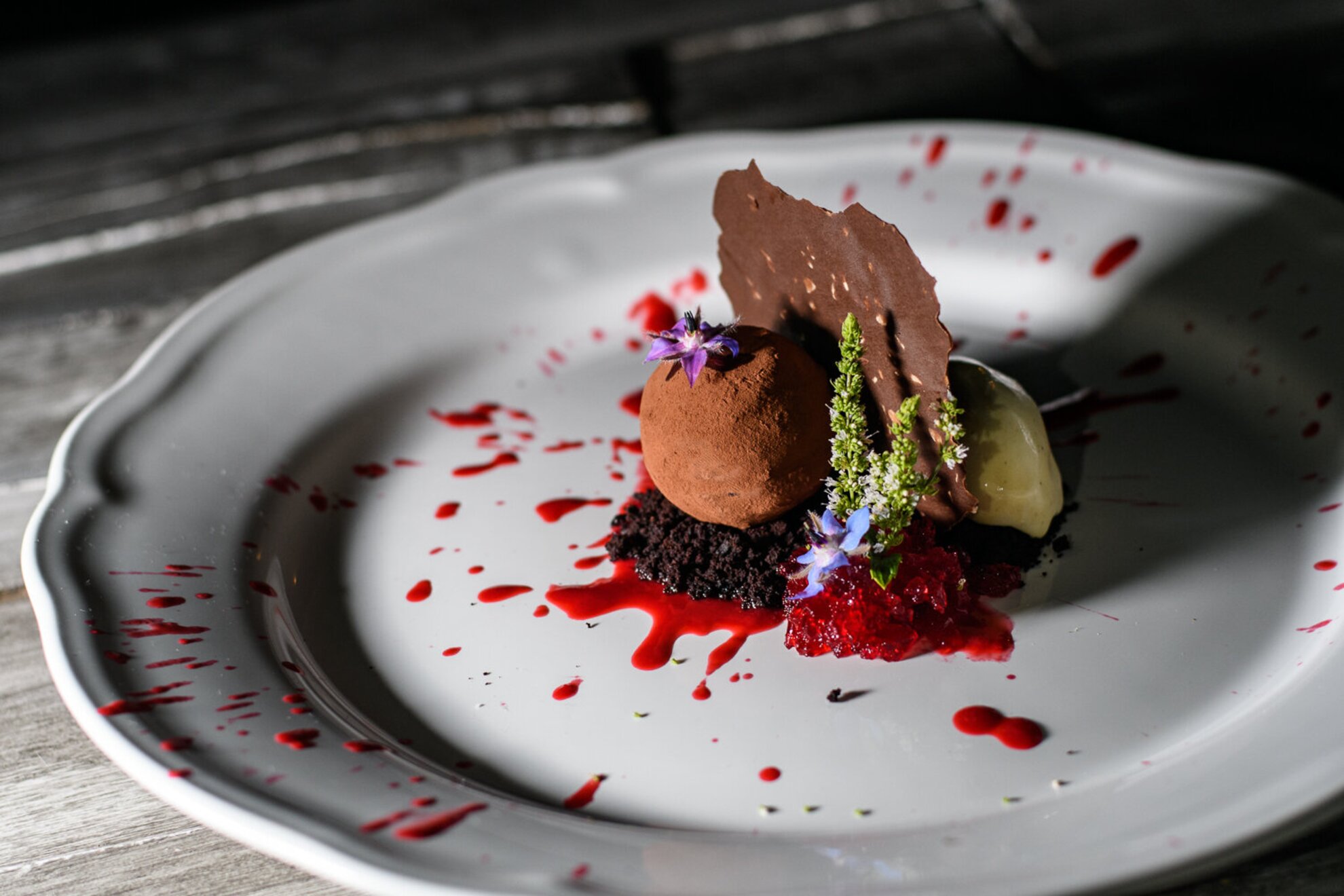
Do you want an Italian chef to cook for you?
They met in Italy when Klára was there for a professional internship. They didn’t want to live in a long distance relationship, they said goodbye to each other, and it went on for years. Klára left her job at a restaurant in Budapest and Moreno left his homeland in last September to share a life. “There’re twists and turns, for sure. Well, he’s Italian,” jokes Klára. “I’m 26, Moreno is 30. We needed this time to make this decision, to figure out what we want.”
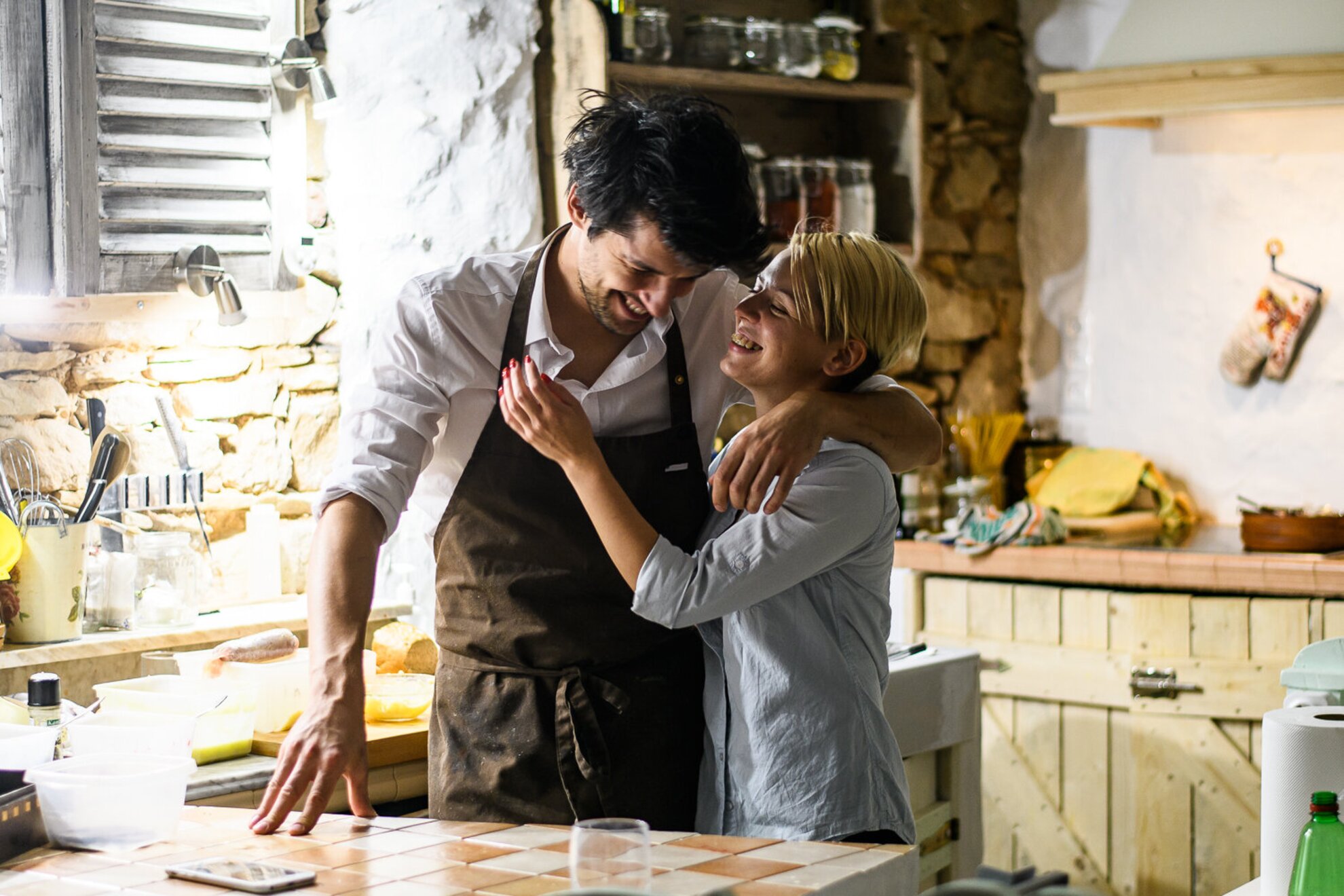
Moreno instantly fell in love with the cellar and the countryside. However, he didn't think that the guesthouse’s main attraction should be his cooking. The turning point came when their guests, a family with small children asked them if they could have dinner there because they didn’t feel like going anywhere. Moreno saw how much the guests enjoyed the dinner and he was convinced. It was already among their plans, but he didn’t believe that there will be guests who want to eat here.
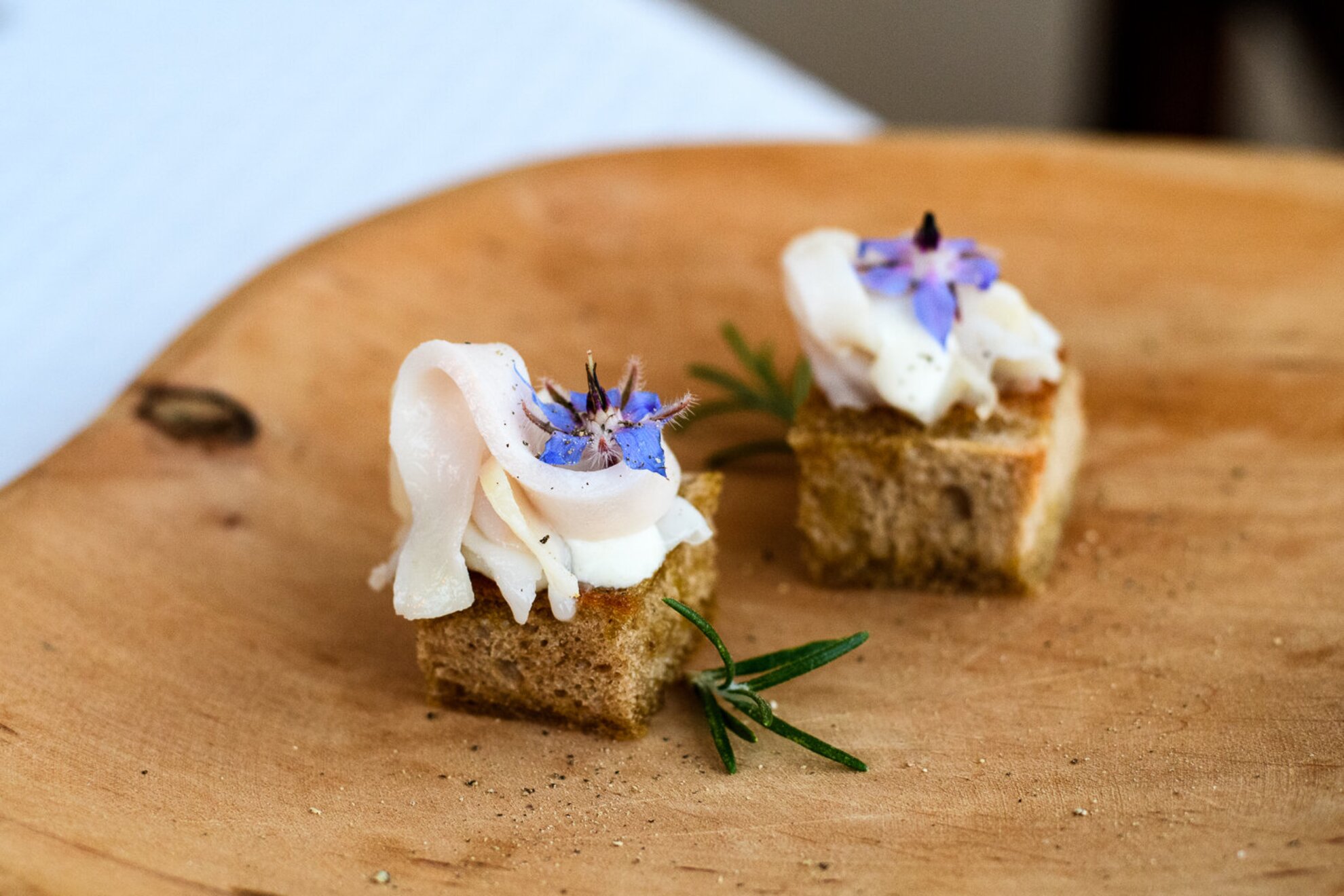
He needed encouragement later on as well. “A couple stopped by at 7:30pm asking if there was a place nearby where they could have dinner. We were just starting out, and we didn’t know if we should tell them that they can have dinner here. In the end they stayed and told us that they didn’t expect to have a five-star dinner. One of them even said that this atmosphere, these two things together are priceless.
No crowds
There’re extravagant, luxury mini-restaurants around the world where they only have a larger group at a time. The concept is the same here, except for all the spectacular sights of luxury. The dinner is only for guests who stay, a starter or a soup costs 1,290-1,490 forints, pastas are priced between 1,890-2,490 forints, main courses are between 2,990-3,990 forints, while desserts are available for 990-1,190 forints. “We would like to provide meals that are affordable, and I have no intention to dress up and wear uncomfortable shoes,” says Klára.
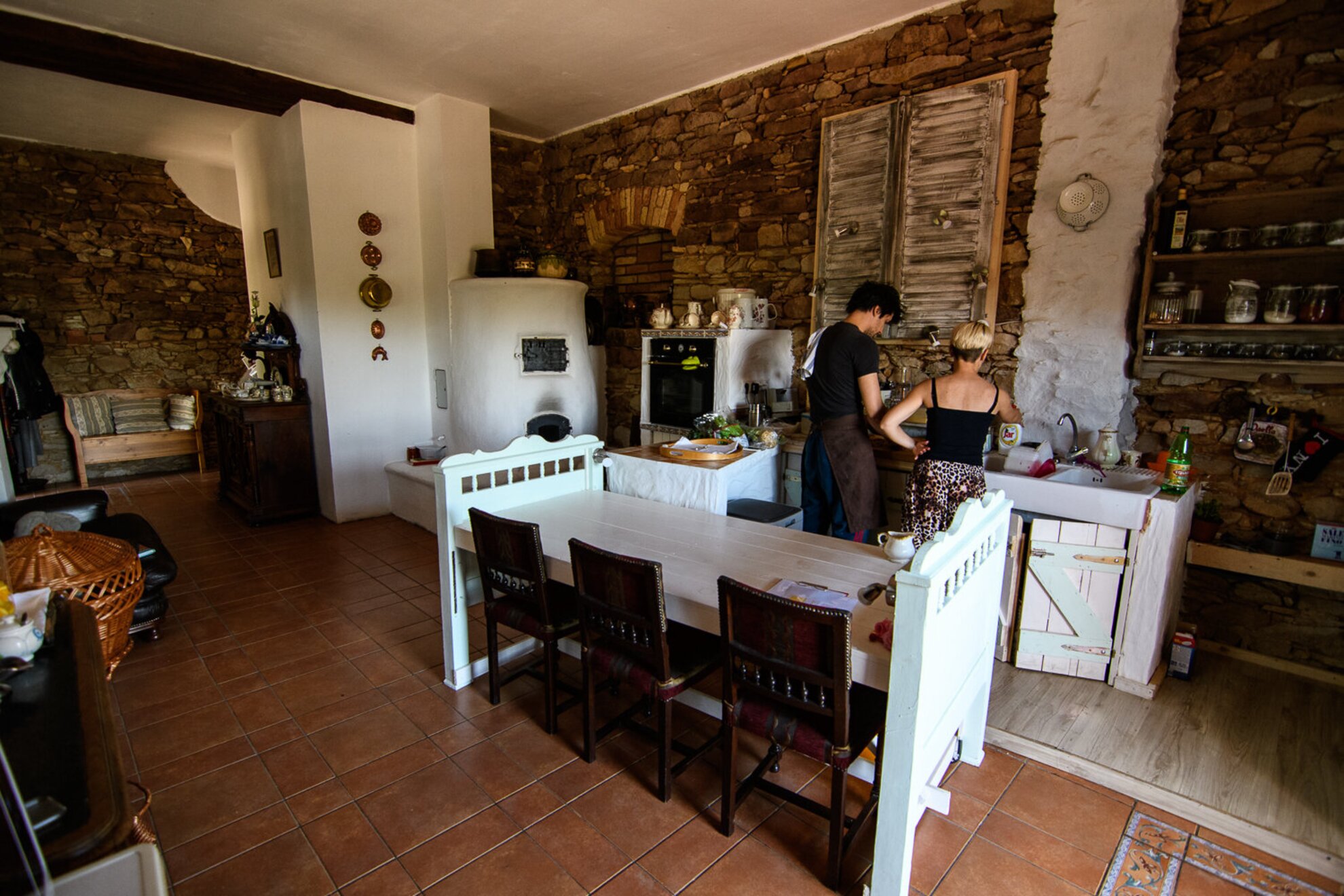
“If we had a restaurant, we would have to hire staff, but we want to be with the guests, and even the best waitress would act differently with them. I like to see into the lives of our guests, to know how their days went, and many of them share a lot with us. People usually come here for at least a week, not just for a few nights. Some people have been coming back for the sixth year, we are like friends. I don’t want to loose the atmosphere we created. It doesn’t worth it. I’d rather have fewer guests instead of becoming a mass-attraction.”
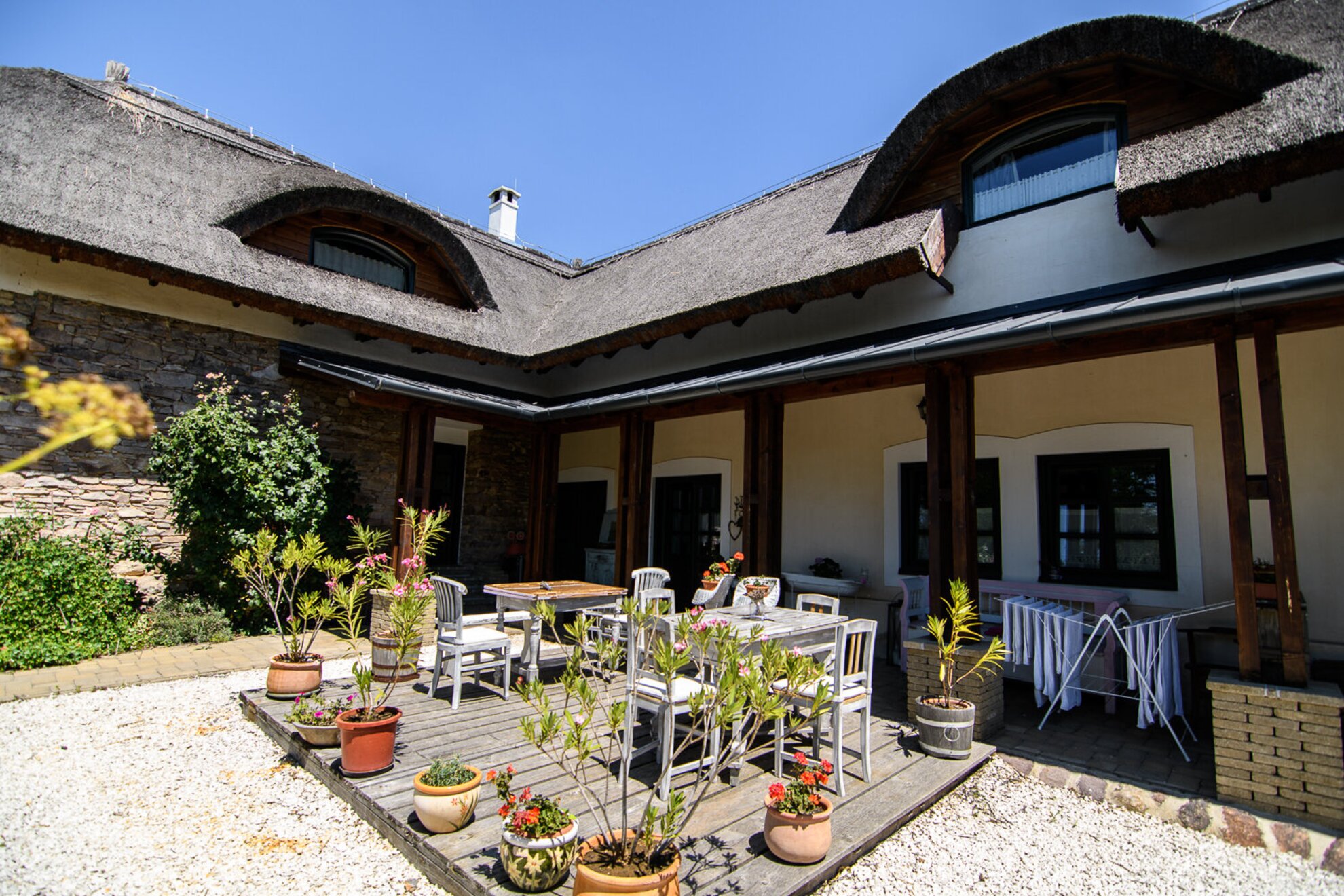
Klára and Moreno live in the bungalow next to the mansion, they do everything themselves. “Somebody asked if we are together. Because they always see us apart, they either see me or Moreno, but never the two of us,” Klára tells us. They pegged some pictures of themselves on a mannequin in the corridor, and since they live close by the guests, they inevitably see into their lives. “We don’t plan on leaving here ever. Not even for Christmas, we want to see what it is like. This is going to be the first time that we will be open in winter. We are beginners, we can’t afford to not be open at Christmas,” says Klára, who’s bump will be quite big by December. Fortunately, her brother, Máté is a bartender and he will help them out – they already have plans together.
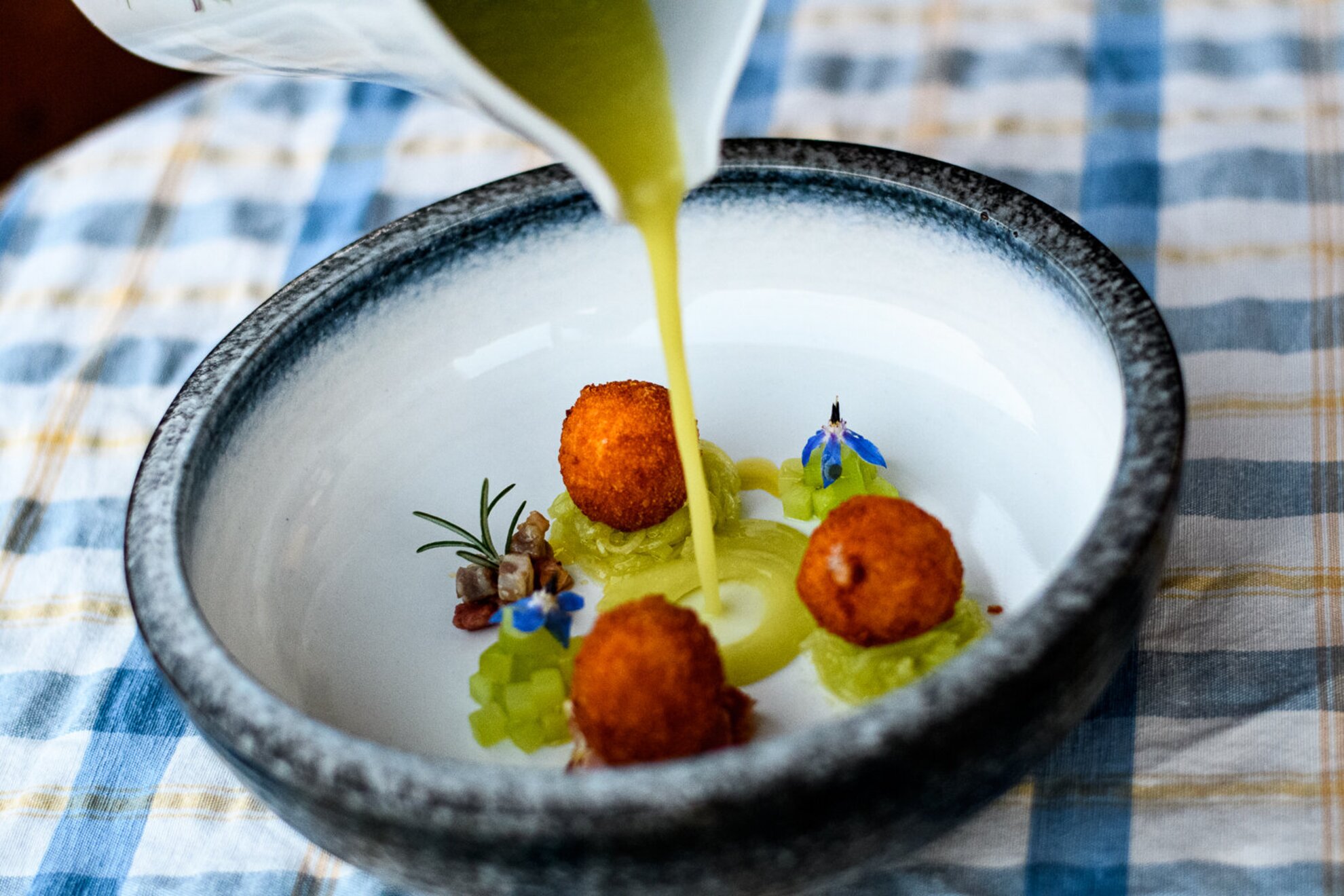
Lángos in Italian
They don’t plan on opening a lángos place, but Moreno thinks that lángos is the best Hungarian meal. “When I first tasted it, I said, Klára, this is crazy! It’s simply perfect!” And what would lángos be like if it was made by Moreno? It would have an Italian twist: he would spread a little sour cream on it, then put carpaccio (thinly cut, raw beef), burrata (a cheese that’s like mozzarella from the outside and is creamy inside), and then some truffle on it. “This has the meat’s neutral, slightly salty taste, the burrata’s creamy richness, and the acidity of the sour cream.
When I was at Costes, the chef wanted to turn lángos into a starter, and I thought, “no, that’s my idea! He’s stealing in my idea! Then he just made simple lángos, and this version is waiting for me.” We asked him if he tried it already. His answer: “No, it’s in my head. We have time.”
Domani, that’s what the Italians say – tomorrow; maybe it will come, maybe it won’t.
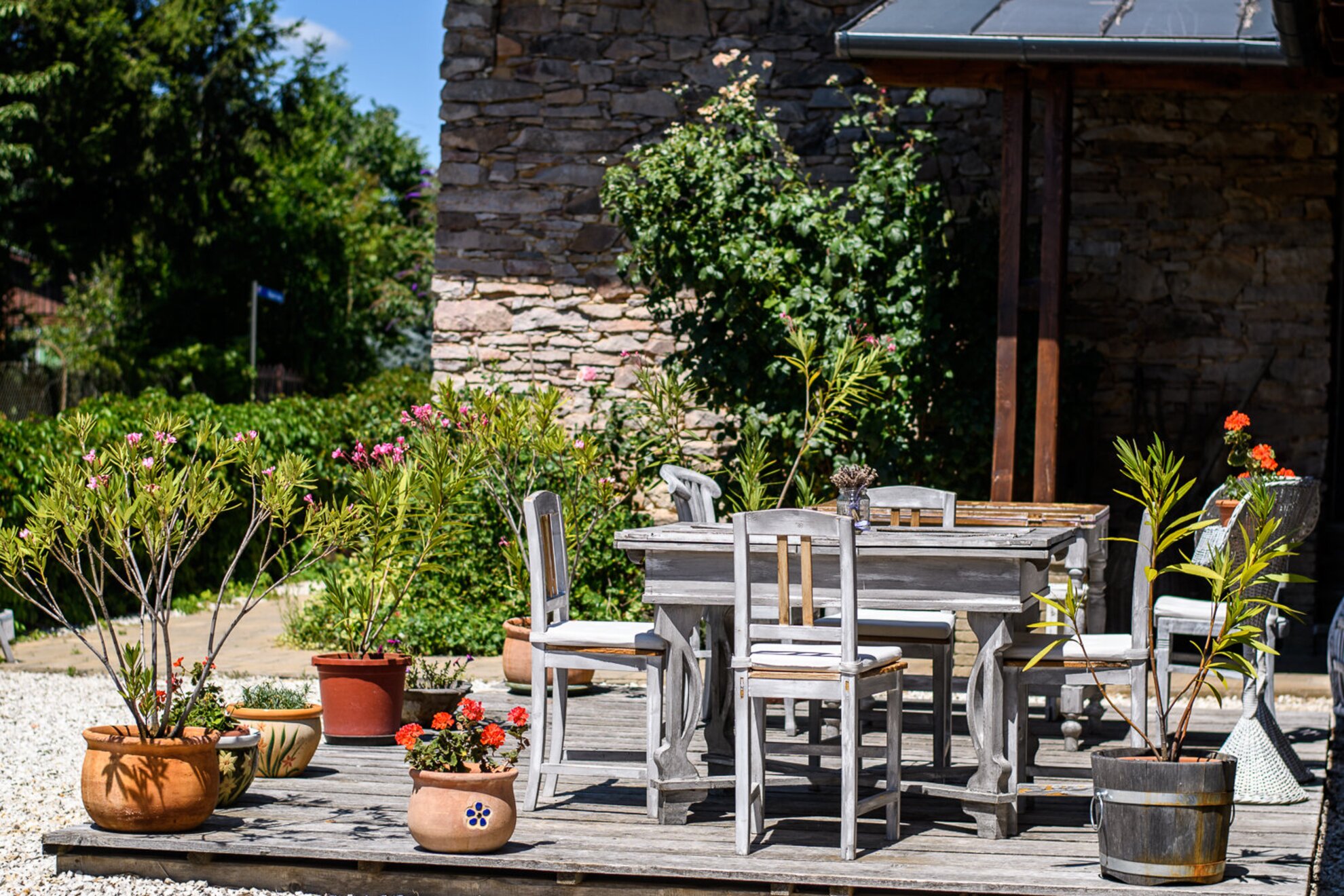
“Time stops here,” ponders Klára. “We wanted to calm down. Moreno loves the garden, and that there’s no one to tell him what to do. He’s his own boss. Every night we discuss what should be the menu the next day, what’s in season. We try to be creative, so that those who have dinner here every night can enjoy some variety.”
